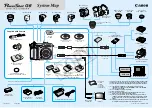
T-CAM 80 P-SERIES/T-CAM 160 XT USER MANUAL
16
9-6 Lens
FOV is the largest area the imager can see at a set distance.
This table lists the horizontal FOV, vertical FOV and IFOV for standard lens.
Focal Length
Horizontal FOV
Vertical FOV
IFOV
9 mm
17°
17°
3.78 mrad
IFOV (Instantaneous Field of View) is the smallest detail within the FOV that can be detected
or seen at a set distance, the unit is rad. The formula is this:
IFOV = ( Pixel Size )/ ( Lens focal length );
D:S theoretical ( = 1/ IFOV theoretical) is the calculated spot size based on the pixel size of
the detector array and lens focal length.
Example: If the thermal imager uses a 9mm lens, because the pixel size of the detector is
34µm, then horizontal FOV is 17°, vertical FOV is 17°, the IFOV is
34 µm/9 mm = 3.78 mrad;
D:S theoretical ( = 1/ IFOV theoretical) = 265:1
D:S
measure
( = 1/ IFOV
measure
) is the spot size needed to provide an accurate temperature
measure. Typically, D:S
measure
is 2 to 3 times smaller than D:S
theoretical
, which means the
temperature measurement area of the target need to be 2 to 3 times larger than that
determined by the calculated theoretical D:S.
I
FOV
theoretical
represents the smallest objects that the thermal imager can detect or see.
IFOV
measure
represents the smallest object form which an accurate temperature can be
measured by the thermal imager.
















































